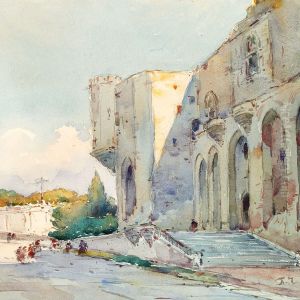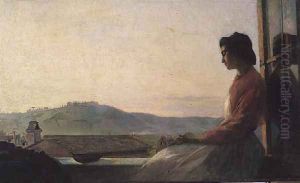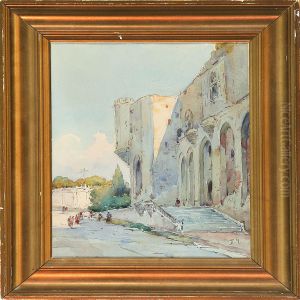Pavel Petrovich Chistiakov Paintings
Pavel Petrovich Chistiakov was a prominent Russian painter and teacher, born on July 5, 1832, in Prudy, a village near Tver, Russia. He was born into a serf family, but his artistic talents were recognized early on, leading to his emancipation and the opportunity to study art formally. Chistiakov's life and career were deeply intertwined with the development of Russian art in the 19th century, and he is best remembered for his contributions to Russian painting and education.
Chistiakov began his art education at the age of twelve when he was sent to study in St. Petersburg. In 1852, he enrolled in the Imperial Academy of Arts, where he was a student of Pyotr Basin and Alexey Tarasovich Markov. He excelled in his studies and received several medals for his work. Upon graduation in 1860, he was awarded a scholarship to study abroad, which allowed him to travel to France and Italy, where he was particularly influenced by the works of the old masters. His painting style was characterized by a firm grasp of academic techniques, a clear compositional structure, and a keen attention to detail.
During his time abroad, Chistiakov developed an interest in the daily lives of ordinary people, which later became a recurring theme in his work. After returning to Russia in the late 1860s, he began teaching at the Imperial Academy of Arts, a position he held for nearly 40 years. As an educator, Chistiakov was highly influential, advocating for a rigorous approach to art education that emphasized the importance of drawing and the study of classical art.
Chistiakov's teaching methods impacted a generation of Russian artists, including notable figures like Ilya Repin, Vasily Surikov, and Victor Vasnetsov. His insistence on academic precision and historical accuracy shaped the practices of these artists and contributed to the rise of the Peredvizhniki (Wanderers) movement, though he did not join the movement himself.
Apart from teaching, Chistiakov was also active as a painter and an academician. He worked on religious and historical subjects, as well as portraits and genre scenes. His works were widely exhibited and garnered respect from both critics and the public. Some of his notable works include 'The Patriarch Hermogenes Refusing to Bless the Poles' (1860) and 'Nun' (1867).
Pavel Petrovich Chistiakov passed away on November 11, 1919, in Detskoye Selo (now Pushkin), leaving behind a legacy of artistic excellence and pedagogical influence that shaped the future of Russian art. His commitment to art education and his own paintings remain significant contributions to the cultural heritage of Russia.


